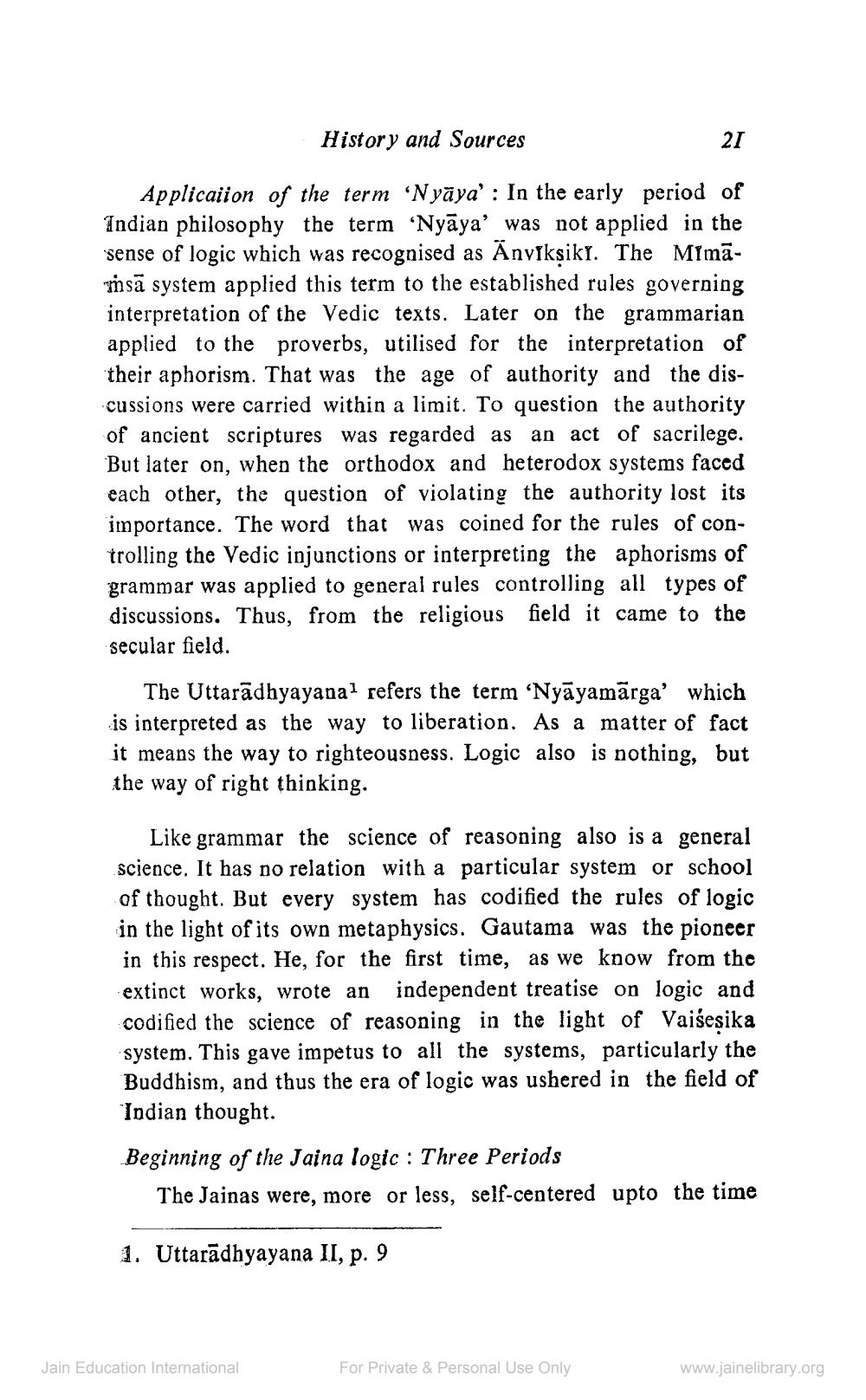________________
History and Sources
Application of the term 'Nyaya': In the early period of Indian philosophy the term 'Nyaya' was not applied in the sense of logic which was recognised as Änvikṣikr. The Mimamsa system applied this term to the established rules governing interpretation of the Vedic texts. Later on the grammarian applied to the proverbs, utilised for the interpretation of their aphorism. That was the age of authority and the discussions were carried within a limit. To question the authority of ancient scriptures was regarded as an act of sacrilege. But later on, when the orthodox and heterodox systems faced each other, the question of violating the authority lost its importance. The word that was coined for the rules of controlling the Vedic injunctions or interpreting the aphorisms of grammar was applied to general rules controlling all types of discussions. Thus, from the religious field it came to the secular field.
The Uttaradhyayana1 refers the term 'Nyāyamarga' which is interpreted as the way to liberation. As a matter of fact it means the way to righteousness. Logic also is nothing, but the way of right thinking.
21
Like grammar the science of reasoning also is a general science. It has no relation with a particular system or school of thought. But every system has codified the rules of logic in the light of its own metaphysics. Gautama was the pioneer in this respect. He, for the first time, as we know from the extinct works, wrote an independent treatise on logic and codified the science of reasoning in the light of Vaiseṣika system. This gave impetus to all the systems, particularly the Buddhism, and thus the era of logic was ushered in the field of Indian thought.
Beginning of the Jaina logic Three Periods
The Jainas were, more or less, self-centered upto the time
1. Uttaradhyayana II, p. 9
Jain Education International
For Private & Personal Use Only
www.jainelibrary.org




